It is important to:
- Explain the benefits of using hearing aids
- Teach a person how to use their hearing aids correctly.
If a person needs assistance to use their hearing aids, encourage them to involve their family members or caregiver.
Benefits of using hearing aids
Explain that hearing aids will assist you to hear and understand speech.
There are many benefits of using hearing aids. They may:
- Make it easier to communicate with family, friends and work colleagues
- Protect you against potential hazards such as approaching cars
- Increase your confidence to be involved in social activities, improving your mental health and wellbeing
- Benefit your brain health and reduce the risk of dementia.
Building up use
Explain it takes time to adjust to wearing hearing aids for the first time. At first, some sounds may be too loud or unclear. This is normal.
You can adapt to wearing hearing aids by using them regularly and by listening to your voice and other voices.
Instruction
Learn more in the tips for hearing aid users leaflet.
Using hearing aids
It is important to teach the person how to use their hearing aids including how to:
- Identify the parts
- Turn on and off
- Adjust the volume
- Put on and take off
- Replace and look after battery.
Parts of a hearing aid
Start by explaining the hearing aid case contains the working parts.
Show the different parts of a hearing aid:
- Microphone which collects the sound
- Ear hook to connect the hearing aid and earmould
- Earpiece of earmould which goes in their ear
- Open the battery door to show the battery which powers the hearing aid and turns it on/off
- Volume control
- Programme switch used when programming the hearing aid.
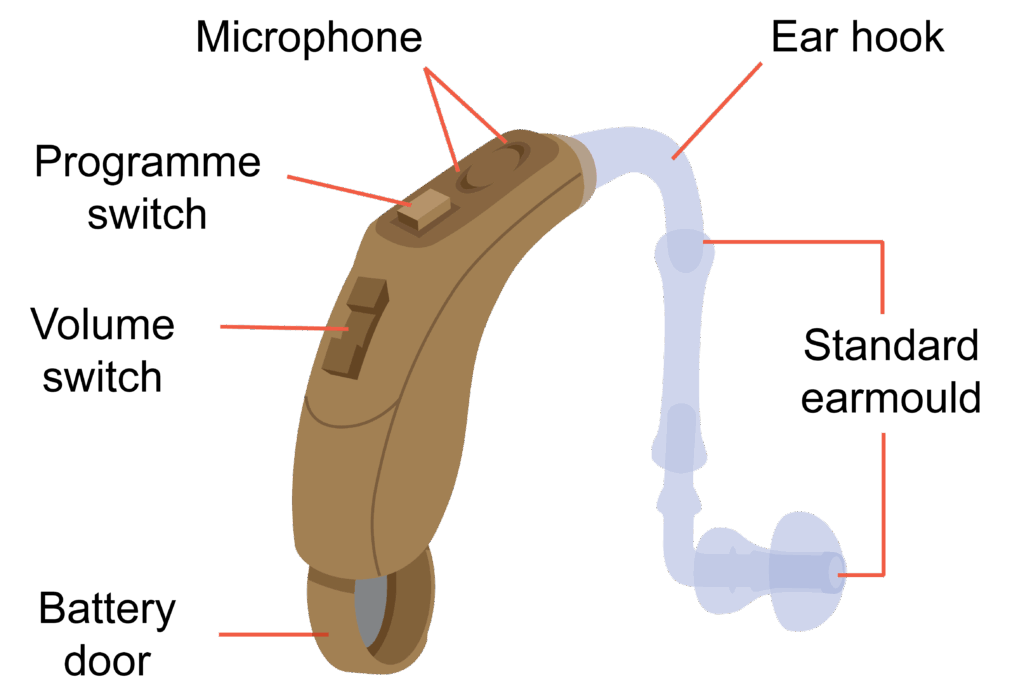
Demonstrate which hearing aid is for each ear. A colour marker shows which side:
- Red marker is for right ear
- Blue marker is for left ear.
Activity
Look at the hearing aids available in your service.
Can you find the red and blue markers for right and left hearing aids?
Turning on and off
Turn the hearing aid on and off at the battery compartment. You will need to place the batteries in the battery compartment.
- Turn on: Close the battery compartment.
- Turn off: Open the battery compartment fully. Ensure the hearing aid is off when not in use.
Adjusting the volume
Some hearing aids automatically adjust the volume to the environment the person is in.
For manual volume adjustment:
- Press the rocker switch up or roll up the volume wheel to increase volume
- Press down the rocker switch or roll down the volume wheel to decrease the volume.
The hearing aid may make a sound to signal the volume change.
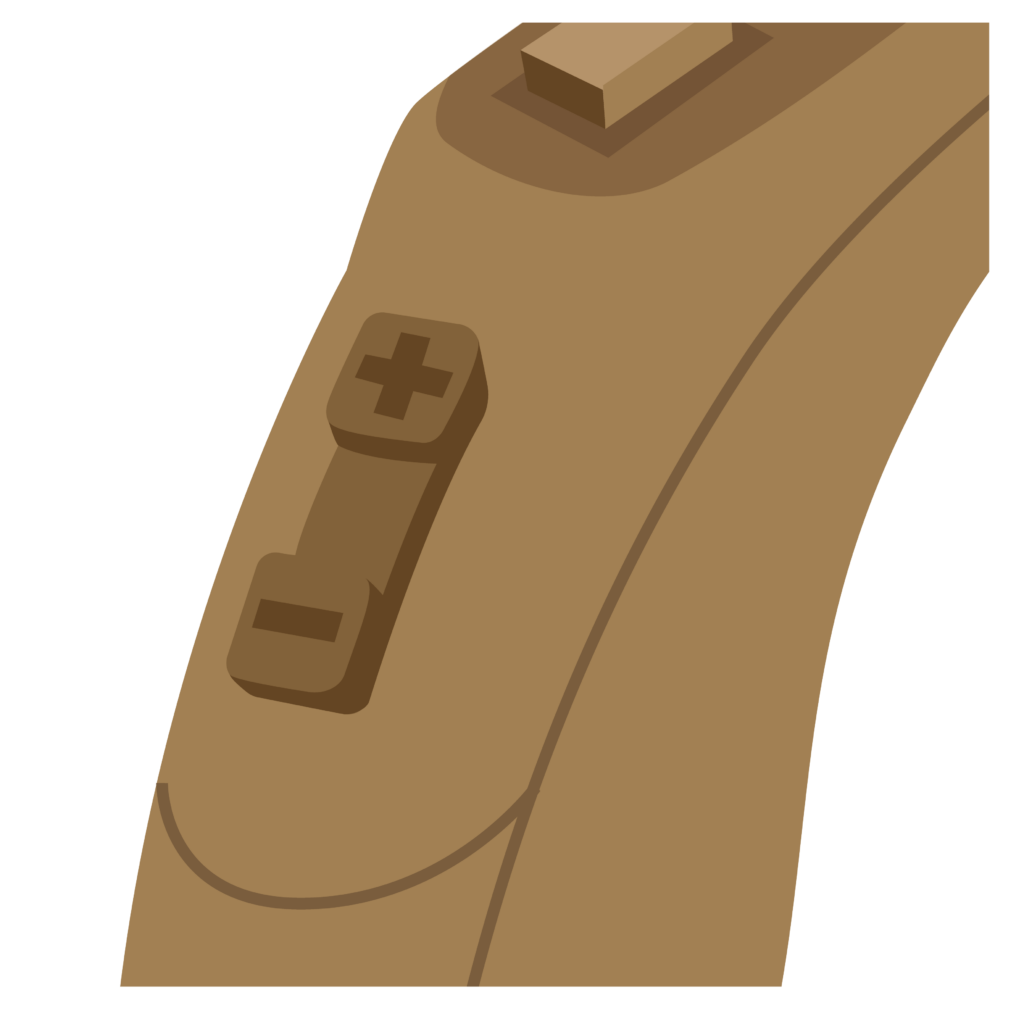
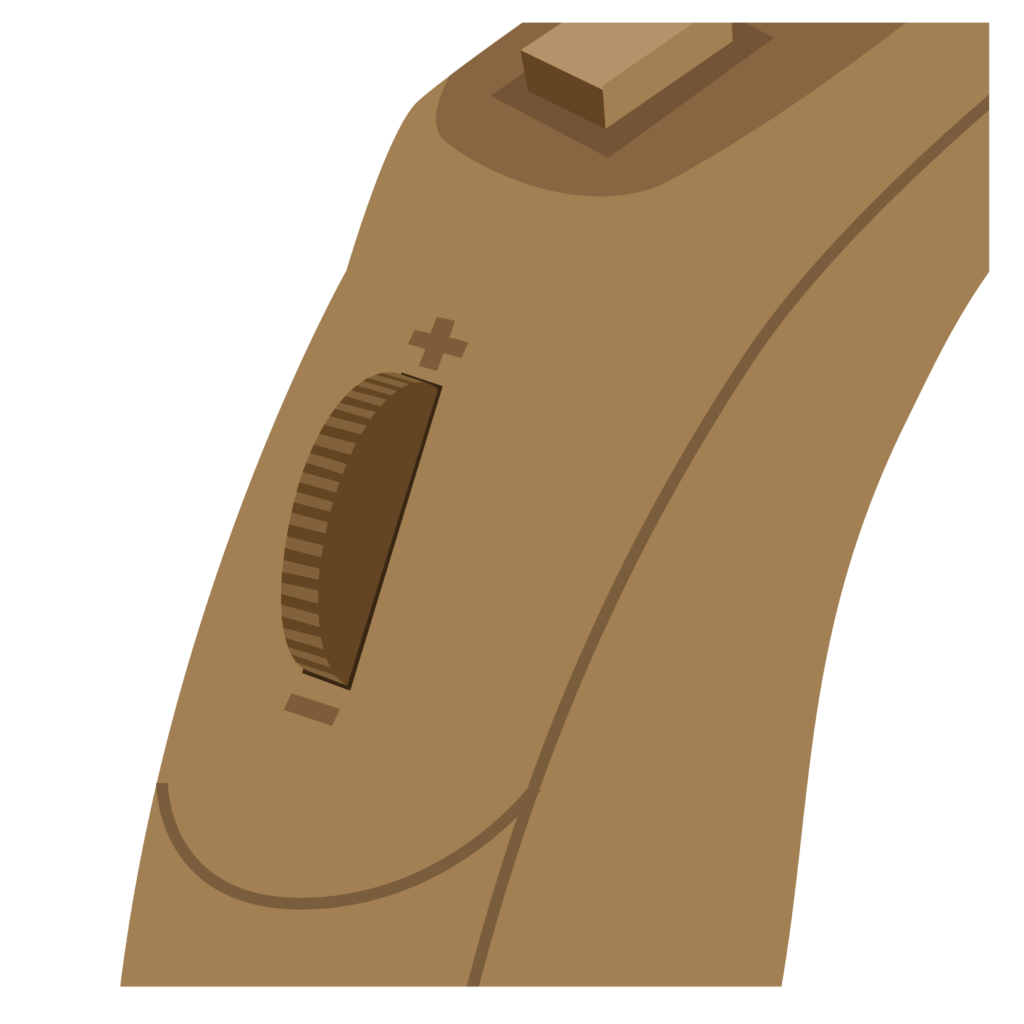
Putting on the hearing aid
Before putting on the hearing aid, it should be switched off by slightly opening the battery door.
Put on earmould first:
- Hold the hearing aid by the bottom of the earmould
- Use your right hand for right ear and left hand for left ear
- With your other hand gently pull your ear up and back – this will make it easier to insert the earpiece
- Gently push the earmould into your ear canal – twist it slightly until it sits well.
Next, use your other hand to slide the hearing aid over the top of your ear.
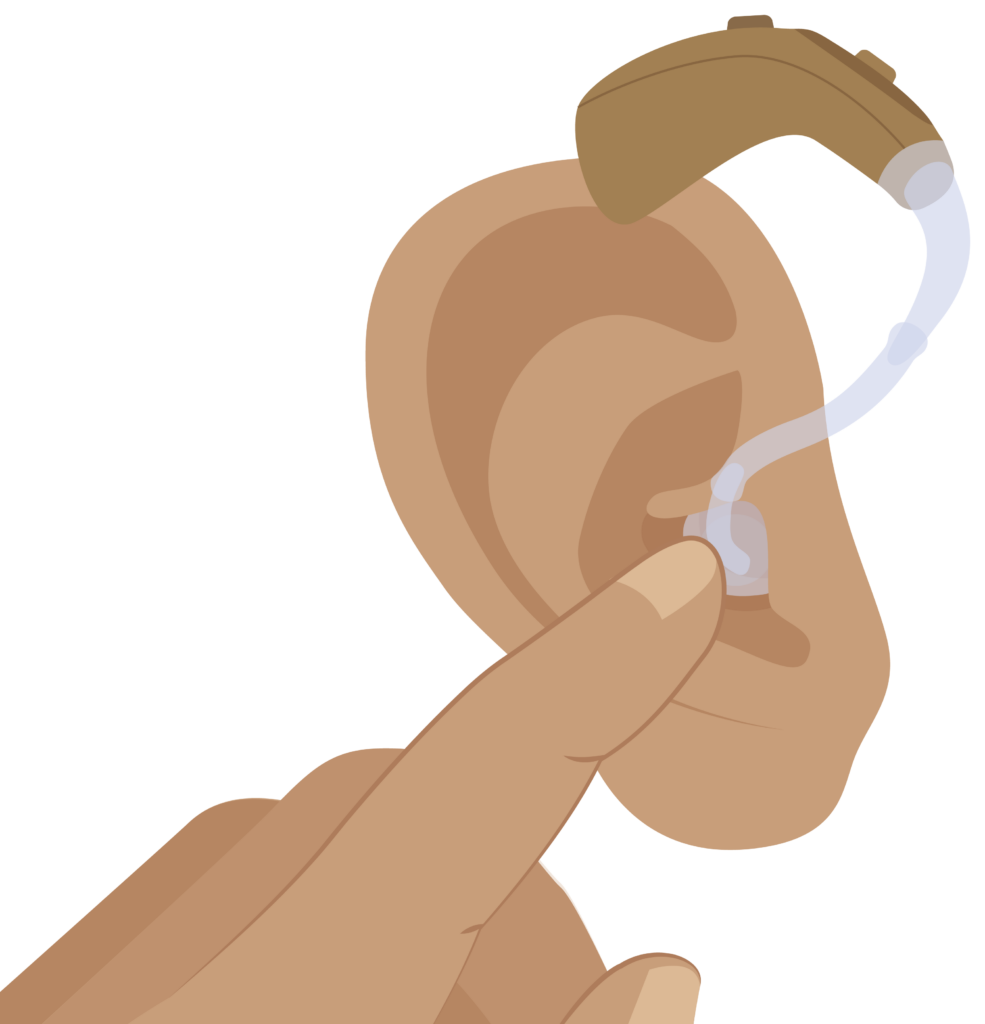
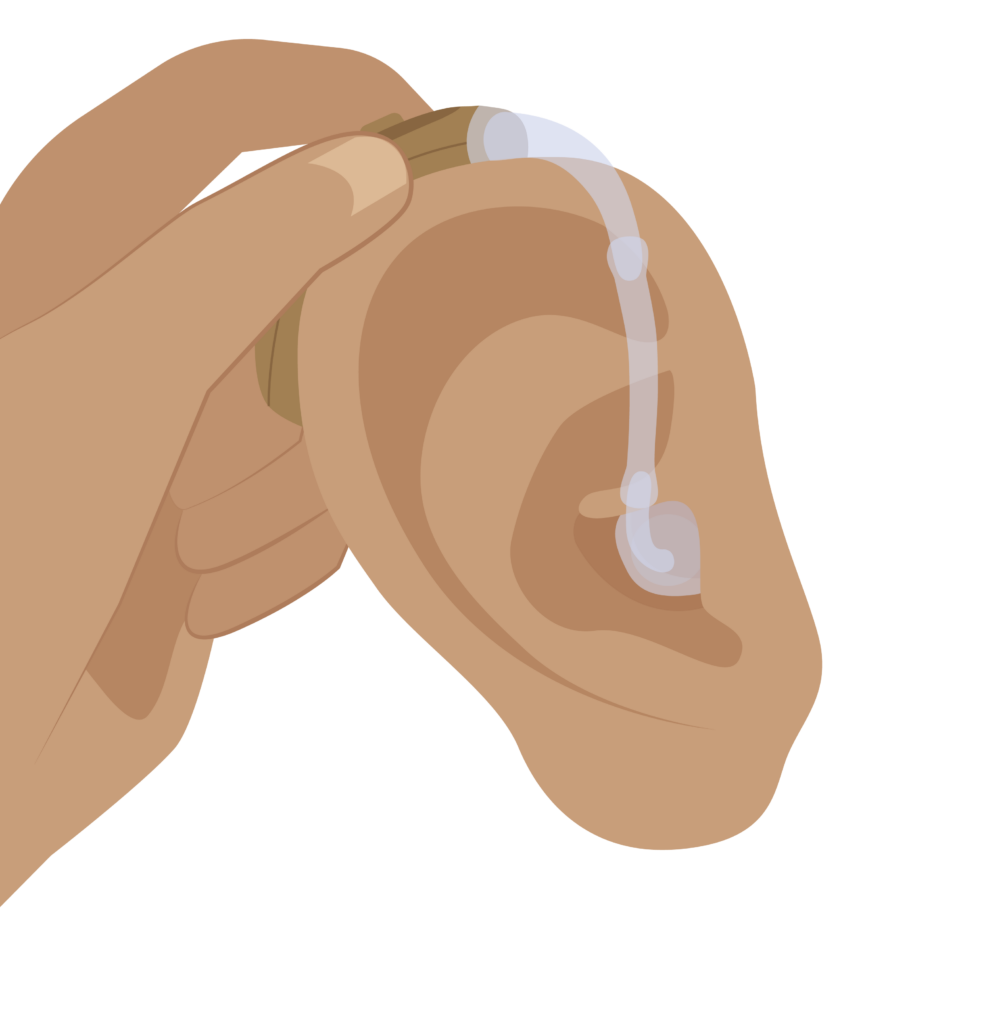
Tip
Use a demonstration hearing aid to teach a person to put on and take off a hearing aid.
A mirror may also help when the person is learning to put on a hearing aid.
Taking off the hearing aid
- First lift the hearing aid and slide it over the top of your ear
- Then hold the tube close to the earmould and gently pull it out.
Instruction
Watch this video to learn how to put on and take off a hearing aid.
Activity
Practice explaining the parts of a hearing aid and teaching how to put hearing aids on and take off.
Battery life
Explain: On average, a battery will keep a hearing aid powered up to two weeks before it needs replacing. A rechargeable battery may need charging every day.
Teach the person how to:
- Increase battery use time
- Replace the battery.
Check and store battery life
When the battery is low the sound becomes weaker or you will hear an alert signal.
To increase battery use time:
- Remove battery overnight and store in hearing aid box
- Remove battery if you do not intend to use the hearing aid for several days.
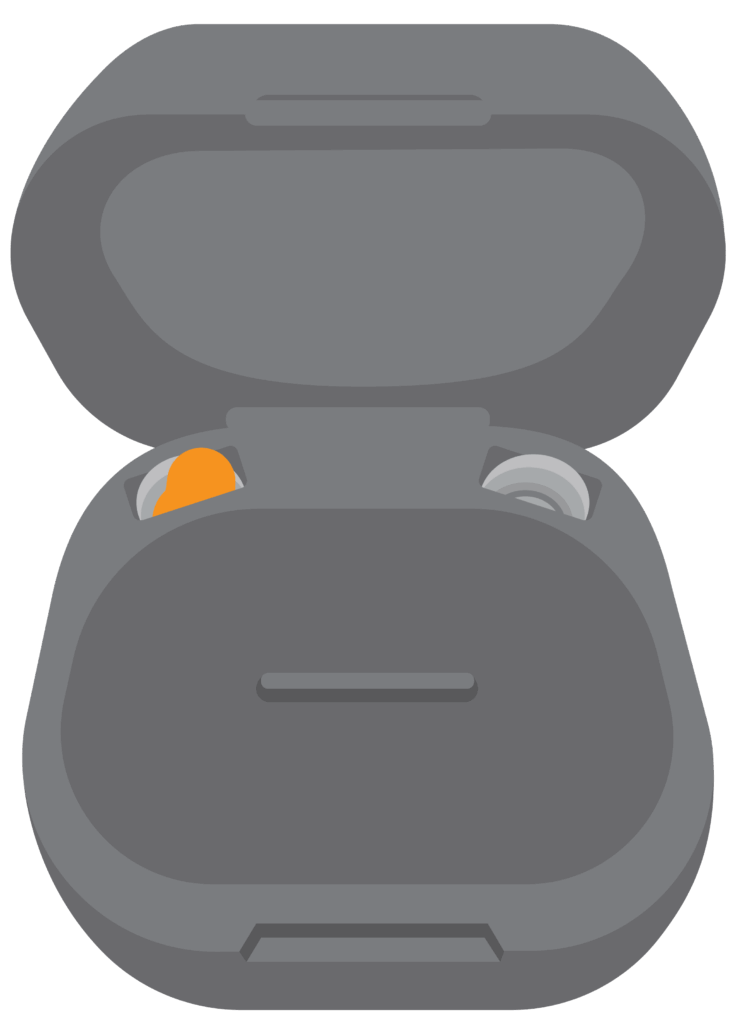
Tip
Place the battery sticker or a note on a calendar on the day you replace the battery. When the battery runs out you can check how long it lasted.
Replace battery
To remove the old battery:
- Open the battery door
- Push the battery out through the bottom or use the battery magnetic tool to lift it out.
To replace with a new battery:
- Remove the protective sticker on the top, plus (+) side of the replacement battery
- Insert with the plus (+) symbol facing up in the battery door.
Some batteries are shaped. Position the:
- Flat surface on top
- Surface with a small bump at the bottom.
After inserting the battery, a sound plays during start-up. Turn the volume down before putting on the hearing aid.
Instruction
Watch this video on how to replace a hearing aid battery.
Tip
If the battery door does not close, check if the battery is inserted correctly.

Tip
Store replacement batteries in a cool place. Always carry a set of spare batteries with you.
Warning
Swallowing batteries is dangerous. Keep batteries stored away from young children and animals. If batteries are swallowed, this is a medical emergency.
Follow your local recycling rules for battery disposal.